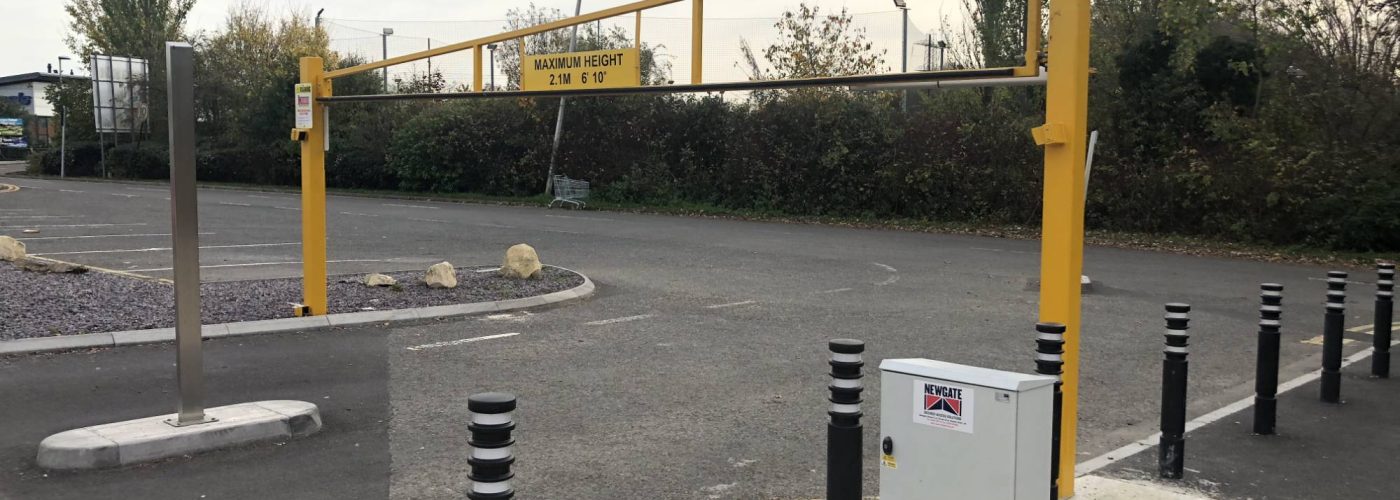Height restriction barriers are an essential feature of car parks for safety reasons, so compliance with height restrictions can be enforced. These barriers will keep tall vehicles away from areas typically made for standard-sized vehicles, hence saving you from possible damages and accidents in every shape or form.
This blog will go into detail on the reasons why these barriers are important, their advantages, and critical elements to keep in mind when deploying them efficiently.
Advantage of Height Restrictions for Car Parks
Enhancing Safety
The most common use for height restriction barriers is safety, especially within car parks. Barriers that contain access to oversized vehicles help reduce the costs of damage control, such as crushed ceilings, pierced beams, and other structural elements. This is easier said than done; otherwise, tall vehicles running into low-clearance areas risk accidents that result in expensive damages to be repaired and potentially dangerous situations for other users. As a result, height restrictions offer preventative measures to protect the tenants and property.
Smooth Traffic Flow
Height restriction barriers mean efficient traffic flow. If larger, unauthorized vehicles try to move within regular-sized vehicles designed for parking spaces, it can become impossible. These disruptions can be prevented from occurring with height barriers, which can help ensure a smooth passage of traffic and decrease any risks of traffic jams or crashes happening on site. This, in turn, improves the overall user experience, facilitating easy access to and from car parks.
Compliance with Regulations
Compliance is everything for car park operators. Certain areas have overtly stated regulations about vehicle height. Height restriction barriers are used to ensure the operator meets these legal obligations, avoiding financial penalties and legal complications. The barriers are updated on an ongoing basis, which displays continuous safety and regulatory compliance.
Versatility in Design
Everyone has a different feel, and various height restriction barriers are available to suit your requirements, design style, and budget. Some of these are fixed and will permanently solve any exposure problem, while others are adjustable to suit your different needs. The Junker sliding barriers can also be tailored to fit the car park’s design concept, so they become part of a harmonious whole. Their flexibility permits operators to select the best barrier for their surroundings.
Durability and Maintenance
The durability of height restriction barriers is a significant concern. Heavy-duty materials like steel or aluminum also speak to longevity and will hold up against the elements even if you use your seat often. But with routine maintenance, such as checking for and repairing any wear and tear or repainting, you can significantly increase the life of your barrier. Improved strength and more permanent barriers are justified not only by the costs but also by the fact that they may be necessary to operate continuously.
Signage and Visibility
Signage and visibility are very important for height restriction barriers. Not only are the signs clearly readable and in a good location, but they also give drivers enough ample warning to not end up changing their minds at last, possibly creating potential accidents. Light or reflective tip material can make a big difference in terms of visibility, especially during early mornings and evenings. Signage is necessary so that drivers know about restrictions in advance and can stay safe and not get a ticket.
Implementation Considerations
When deploying height restriction barriers for car parks, several factors must be considered to balance these trade-offs. First, examining the car park and its average vehicle height can provide insight into the appropriate limit. Additionally, consulting with car park designers and structural engineers can help determine the most effective locations for the barriers. Involving stakeholders, such as end-users and local agencies, in the design process can lead to more user-friendly solutions that gain wider acceptance.
Conclusion
Having height restriction barriers in place is crucial to keep people safe, to ensure that traffic flows freely, and to ensure overall compliance. Not only can they be designed to meet a variety of applications, but their durability and necessity for the use of signage also make them invaluable for efficient car park management. By taking into account variables such as the average height of vehicles, referring to experts, and keeping the environment in mind, car park administrators can introduce barriers that will ensure a safer and more usable space for everyone.





